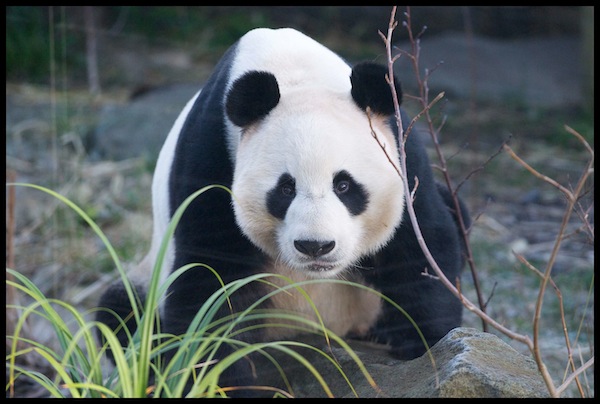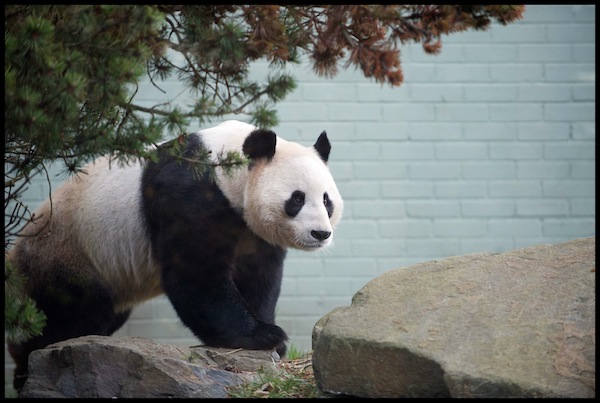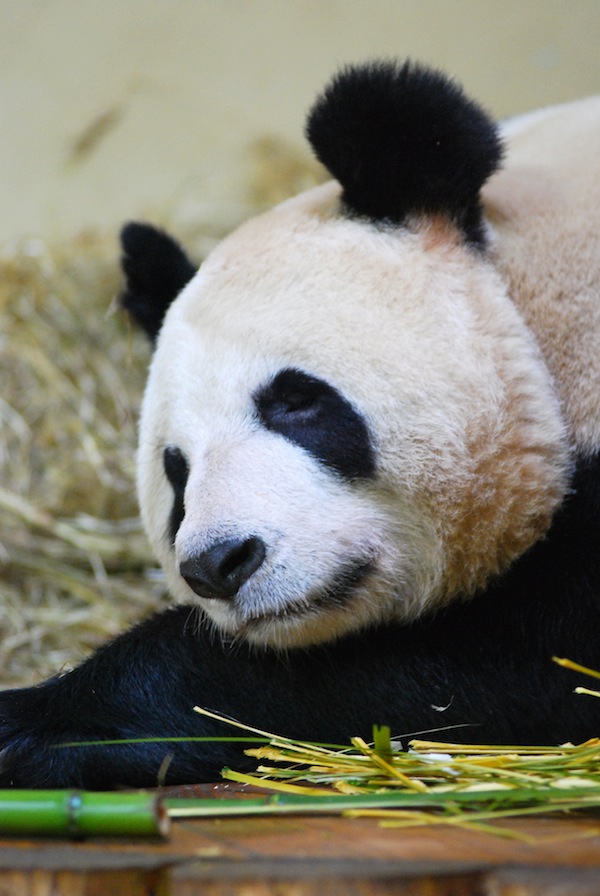Will there be panda cubs this year in Edinburgh?
Now that Valentine’s Day is out of the way Edinburgh Zoo are turning their thoughts to panda romance.
Our pandas have another chance to breed this year, and already Tian Tian and Yang Guang have been encouraged to use each other’s enclosures and leave their scent there.
[youtube https://www.youtube.com/watch?v=wBnST0YMQig]
Experts at Edinburgh Zoo have announced they expect the giant panda breeding season may be earlier this year, as both animals have already started to show important changes in their behaviour that indicate that they will soon be ready to mate; it could be as little as four weeks away.
Male Yang Guang recently began doing handstands. The big bear has been spotted doing panda gymnastics against trees, walls and rocks, by going upside down on his front paws and scent marking as high up as possible. In the wild, males compete to show female pandas how fit and virile they are, with the ‘best’ male being the one to scent as high as possible.
Female Tian Tian has also already started calling out to Yang Guang. Normally giant pandas are pretty quiet outside of breeding time, but both the males and females bleat and call to one another during breeding season.
In 2012 female Tian Tian came into season on 2 April. Although it is impossible to tell exact timings this early on, the Zoo specialists are predicting breeding season could fall somewhere in the month of March. Experts are able to predict when both giant pandas are ready to breed by a combination of behavioural observation and hormone testing, but to date no hormonal changes have been seen in either panda.
Last year, in early April 2012, Edinburgh Zoo’s giant panda cams were turned off and Tian Tian and Yang Guang met properly for the first time in their indoor enclosures. Amidst much excitement, from both the animals themselves and the outside world, the pair went on to meet several times over the course of three days. And, although they did not end up fully mating, the experience for the two pandas and Edinburgh Zoo was immeasurable in terms of scientific learning, process and expertise – which will all give the animals the best possible chance of success.
In 2013 Edinburgh Zoo is focusing on synchronising the breeding cycles of both pandas with a strict “lights out” policy. From the 1st January lighting levels inside both panda enclosures were timed to stimulate natural light levels outside – so when the sun comes up lights will go on in the panda enclosures and when the sun goes down it’ll be lights out and early to bed. This is vital as lighting levels dictate panda hormone levels.
Urine testing to monitor the all-important hormone levels also began on Tian Tian at the turn of the year, with the female’s hormones now already being tested on a daily basis in conjunction with Edinburgh University. New for 2013 is that the male’s hormone levels will be tested and Edinburgh Zoo is playing its part in vital research in panda male reproduction. His urine samples are being banked and will be tested after the breeding season.
Enclosure swapping began at the start of February, with Tian Tian exploring Yang Guang’s territory and vice versa, to which both pandas responded enthusiastically. A very important technique as chemical cues and signals play a major role in breeding, giant pandas are solitary animals and are very much dependent on scent marking as a means of communication between them. Enclosure swapping will continue and increase in frequency right up until the peak of the season.
Yang Guang also has an increased appetite for bamboo and will shortly start to enhance his body size as male pandas need to be in peak physical shape during breeding season.
This week Iain Valentine, Director of Giant Pandas and Strategic Innovations for the Royal Zoological Society of Scotland, returned from a Giant Panda Species Survival Programme meeting in Atlanta, Washington. Made up of the four American giant panda zoos and Toronto Zoo, who will soon welcome pandas themselves, Mr Valentine was honoured to be invited to engage and share learnings.
Iain Valentine comments:
“In 2013 we are working on synchronisation between the sexes and our approach builds on the important work we have done so far that combines behavioural observation with biological analysis.
“We’re delighted that both Tian Tian and Yang Guang have started to scent mark and call, both clear behavioural indicators of courtship and mating behaviour. Although both giant pandas are showing these changes in their behaviour, it is still early days yet and way too early to give any accurate prediction on timings, however, early indicators do suggest the breeding season will probably fall in March this year. In reality we could be as little as four weeks away, although equally the big day could still be as far off as eight weeks. We are now definitely on the flight path.
“This year we will combine both natural and assisted reproduction methods. This follows the best practice methodology adopted by other panda keeping zoos around the world and gives our giant pandas the best possible chance of success. It is also the technique that aligns most with the multiple mating strategy that giant pandas mate in the wild.
“The expert team of the Royal Zoological Society of Scotland (RZSS), based at Edinburgh Zoo, look forward to being joined at various points over the next few weeks by specialists from around the globe to share their expertise and learnings and apply them to giant panda breeding. 2013 will also see the development of the research programmes to be undertaken in the ten year period that Tian Tian and Yang Guang are with us at Edinburgh Zoo.”
Giant pandas are the national treasure of China and many factors related primarily to an increase in human activity have caused the marked decline and geographic fragmentation of the species in habitat. The Royal Zoological Society of Scotland is part of a well-established ex-situ breeding and research programme for giant pandas which is acting as an important resource and insurance policy against catastrophes that might affect their wild counterparts. The ex-situ population of pandas contributes to the in-situ conservation efforts as it enhances our biological knowledge and increases public awareness.
PHOTOS – ROB MCDOUGALL
info@robmcdougall.com
www.RobMcDougall.com
07856222103



